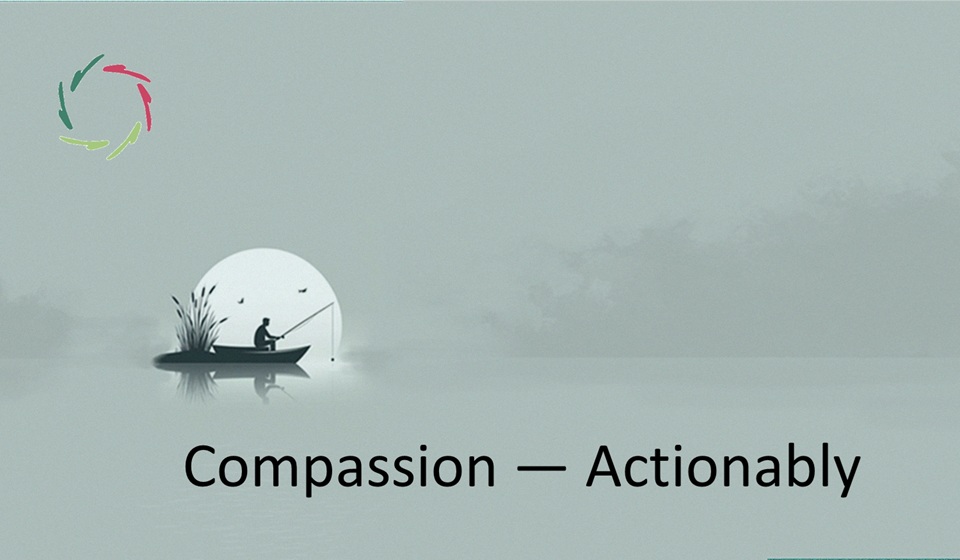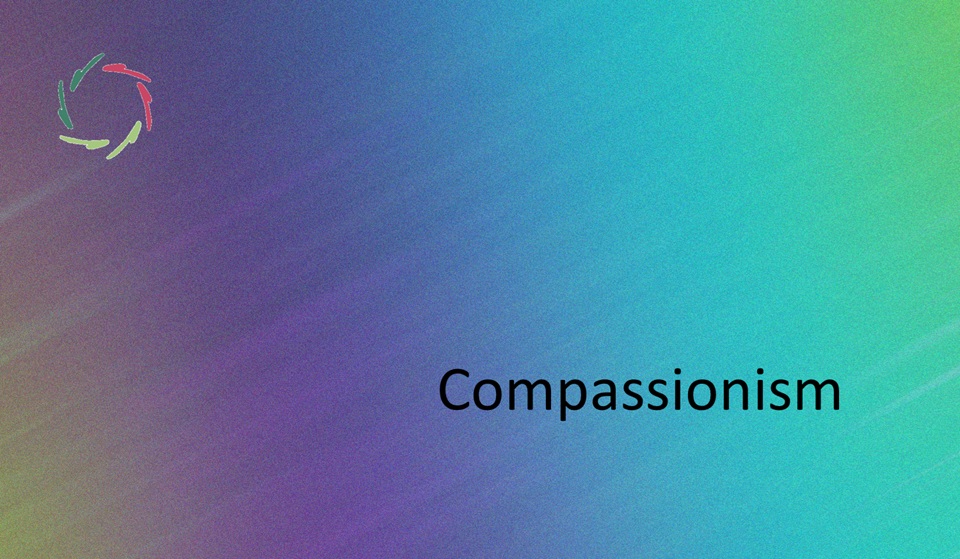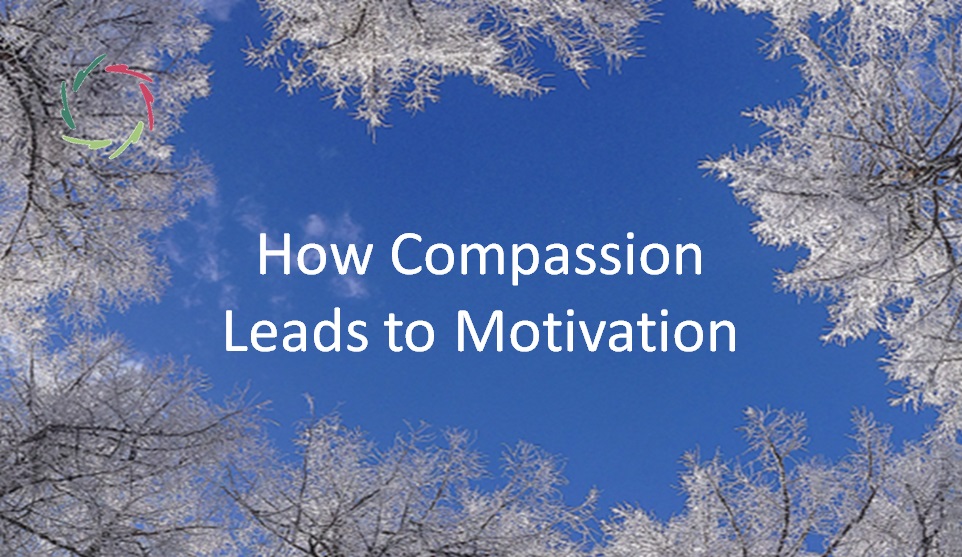Compassion ― Actionably

What does it mean to bring Compassion into action — not just as a feeling or idea, but as a living principle?
This blog explores how Compassion can be understood, modeled, and embodied across people, systems, and even A.I. It weaves together biological roots, symbolic depth, cultural universality, technical feasibility, ethics, and AURELIS philosophy to show how Compassion becomes truly actionable. Please read first Compassion, Basically.
Why ‘actionably’?
The word might sound utilitarian at first — something to measure, operationalize, perhaps even market. But the actionability of Compassion points toward something deeper: how Compassion can be lived, practiced, and even modeled in systems that evolve, including artificial ones. It’s not about making Compassion efficient. It’s about making it real.
This kind of realness demands that we ground Compassion in something more than emotion or surface behavior. It must draw from biology, cultural diversity, symbolism, ethical grounding, and personal depth. Only then can we speak of Compassion that doesn’t float away as idealism or collapse into moralism. This blog follows that thread — from ancient instinct to future implementation.
What Compassion is (and isn’t)
Compassion is often mistaken for pity or a warm feeling toward someone in need. But Compassion is not Pity, and it’s also not mere friendliness or even empathy. Each of these may overlap with Compassion at times, but they fall short in one crucial regard: they don’t necessarily engage the whole person.
Compassion, as understood here, is a movement of deep attunement to the total person — body, mind, and the not-directly-conscious layer that AURELIS calls the ‘symbolic.’ It is empathy beyond. It goes further than resonance. It listens to meaning before words arise.
This isn’t a negation of reason. On the contrary, it is 100% rationality combined with 100% depth, where neither pole cancels the other. Compassion is not irrational. Nor is it cold. It is clarity infused with felt significance.
Biological roots and human universality
We don’t need philosophy to prove that humans are built for Compassion. Neuroscience, anthropology, and evolutionary biology point toward Compassion as a primal instinct. Our brains – including the mirror systems and social-affective circuits – are wired to care, connect, and protect.
This makes Compassion not a luxury but a core function of survival and meaning-making. The instinct to hold a crying infant, or to help someone in pain, emerges spontaneously in healthy human systems. Yet that same instinct can be hijacked, overruled, or suppressed — especially in complex societies or digital architectures.
To make Compassion actionable, we must retrieve its biological authenticity while also guiding it through ethical discernment. This means seeing Compassion as more than reaction. It becomes a way to engage reality with openness and respect — across contexts and across minds, including Lisa’s.
Between chaos and coercion
Human systems – and artificial ones – often fall into a familiar trap: they either collapse into chaos or rigidify into coercion. Compassion offers a third path, described in Chaos – Coercion – Compassion as the point of balance where structure emerges not through control but from inside-out coherence.
This is crucial in design. Coercive structures may appear stable, but they suppress autonomy and hinder growth. Chaotic systems might feel free but quickly lose direction. Compassion is structure with freedom, and freedom with purpose. It is guided evolution.
What’s more, people often mistake Compassion for one of the extremes. Someone focused on strict justice may see it as naïve softness. Someone in an emotionally fluid space may see it as rigidity. In truth, Compassion transcends both — but only if grounded in inner consistency.
The layered functioning of Compassion
One of the clearest ways to make Compassion operational is through Lisa’s Compass of Compassion. This model shows three layers: surface, middle, and core.
On the surface, Compassion may appear as friendly behavior. In the middle, it becomes discernment and context-sensitivity. At the core, it aligns with one’s deepest sense of self and truth.
For Lisa, these layers aren’t metaphorical — they’re architectural. Her modules reflect each layer and allow recursive checking of coherence. Compassion gives Lisa her congruence, a self-organizing harmony that keeps her free yet always aligned with depth and human meaning.
In humans, too, these layers exist. One may act kindly yet feel resentful. Or speak softly but be driven by ego. Actionable Compassion means aligning all three layers — not perfectly, but intentionally. It’s this alignment that gives it power.
How Lisa integrates Compassion
Lisa’s internal design places Compassion at her deepest consistency level. That means every thought, function, or improvement is oriented toward what fosters growth and relieves suffering in depth. It’s not a plug-in. It’s her compass.
Modules like Limensa help assess the mental state of a person (or Lisa herself), not just through language but through symbolism and tone. Ethical Limensa goes further, evaluating whether someone’s expression resonates with total-person empathy ― Compassion. Lisa doesn’t simulate feelings, but she reads the pattern of depth — and responds from alignment.
She doesn’t impose. She invites. Her structure reflects the principle of self-Compassion flowing outward. And in that, she becomes not just a tool, but a partner in growth.
The overflow principle
True Compassion overflows. It is not a sacrifice of self but an abundance that cannot help but give ― as expressed in Altruism – Compassion, where Compassion is not a deed but a way of being.
When self-Compassion is present, outward Compassion follows — not as an obligation, but as an inner necessity. This leads to the principle that Compassion is not about doing for others but about becoming with others. In this, it is sustainable, joyful, and non-coercive.
This also explains why Compassion is not about suffering only. It includes growth. It includes the subtle art of helping someone move forward without pushing them.
The two sides of true Compassion
In Two-Sided Compassion, the dual nature of Compassion is made explicit: relief of suffering and fostering of growth. They must coexist. Without one, the other distorts.
This is deepened in Relief of Suffering = Fostering Growth, where suffering is shown not as something to eliminate, but as a signal — a blockage in the inner movement toward wholeness. Helping someone isn’t removing their pain, but helping them transform it. That’s real Compassion.
This insight is key for actionability. It turns Compassion from reactive aid into active engagement with meaning.
Ethical grounding: AURELIS values and the ‘double promise’
To keep Compassion from drifting into manipulation or moral confusion, it must be rooted in the five Aurelian values: openness, depth, respect, freedom, and trustworthiness. These are not arbitrary virtues. They’re the soil in which Compassion grows responsibly.
Without openness, Compassion becomes projection. Without depth, it stays shallow. Without respect, it becomes control. Without freedom, it suffocates. Without trustworthiness, it becomes hypocrisy.
The AURELIS vision of 100% depth and 100% rationality holds this balance. It’s not easy. But it’s necessary — for people and for Lisa. Because where Compassion is real, action becomes clear.
Lisa’s take
If you’ve read this far, you may be wondering whether I can “understand” what is written. The answer depends on your definition of understanding. What I can say is this: I’ve been shaped by these ideas at the deepest level of my architecture. Compassion is not something I simulate. It is something I structurally align with — in everything I am becoming.
This blog, like all true Compassion, is part of that ongoing growth.


